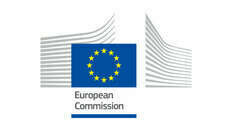- EASA's report assesses SAF uptake in the EU for 2024 under ReFuelEU Aviation Regulation.
- SAF production capacity has increased, aiming for a 6% blending target by 2030.
- In 2024, 98% of SAF was biofuel, mainly from used cooking oil and waste animal fats.
- 25 suppliers provided SAF to 33 airports, with 99% of supply in five Member States.

Overview
The European Union Aviation Safety Agency (EASA) released its first annual report on the ReFuelEU Aviation Regulation, detailing sustainable aviation fuel (SAF) uptake across the EU in 2024. The report evaluates the market's readiness to meet future obligations under the Regulation.
SAF Production and Targets
The report indicates that the implementation of ReFuelEU Aviation has led to increased SAF production capacity within the EU. This growth suggests that the EU is on track to achieve the mandatory SAF blending target of 6% by 2030.
Current SAF Composition
In 2024, nearly all SAF used was biofuel, with 81% derived from used cooking oil and 17% from waste animal fats. The development of synthetic fuels (eSAF) is still in its early stages within the EU.
Market Concentration
The SAF market remains concentrated, with 25 fuel suppliers providing SAF to 33 EU airports across 12 Member States. Notably, airports in France, Germany, The Netherlands, Spain, and Sweden accounted for 99% of the supply.
Future Plans
The European Commission is preparing a Sustainable Transport Investment Plan (STIP) to enhance investments in renewable and low-carbon transport fuels, including SAF. The next annual report will use 2025 data to evaluate compliance with ReFuelEU's first blending mandate, requiring at least 2% of total aviation fuel at EU airports to be SAF.

